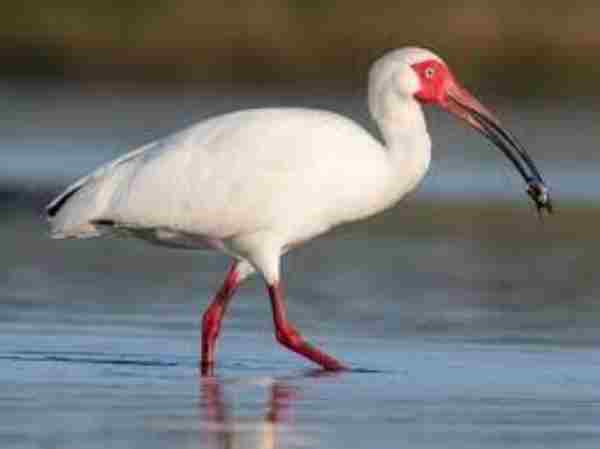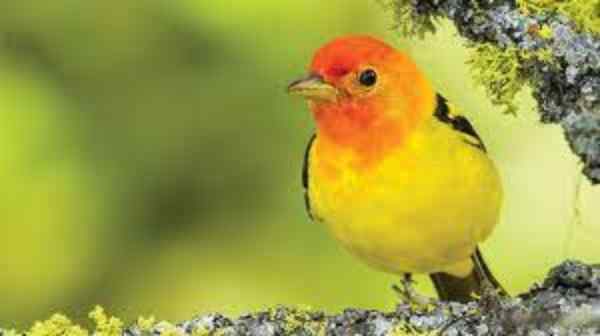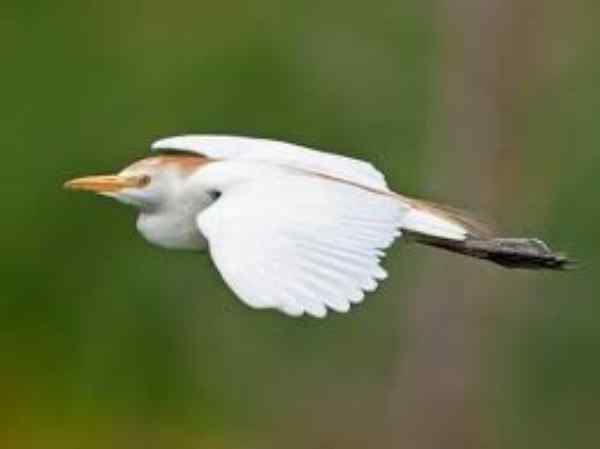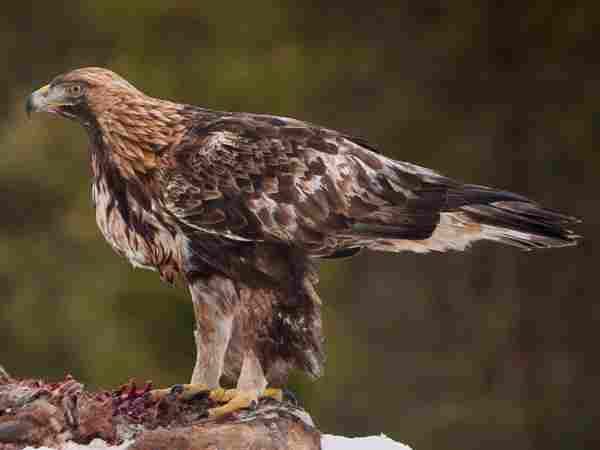There’s no denying that Ohio is a prime destination for bird enthusiasts. The vast array of habitats scattered throughout the state provides a perfect haven for a diverse range of stunning bird species. But what’s even more thrilling is seeing the rare and elusive birds that call Ohio home. Luckily, we’ve got you covered.
Table of Contents
In this article, we’ll take a closer look at some of the lesser-known bird species residing in Ohio. You’ll learn all about their unique characteristics, as well as the best locations for bird watching across the state. So whether you’re a seasoned birder or just starting out, grab your binoculars and join us on an exciting journey of discovery!
List of 12 Rare Birds in Ohio
Birdwatchers in Ohio have quite the variety to choose from with the state being home to a whopping 442 species of birds, according to the Ohio Bird Records Committee. However, among this impressive number, there are a few rare sightings that have only been recorded a handful of times.
Burrowing Owls

Scientific Name: Athene cunicularia
Conservation Status: Least concern (population decreasing)
Rare sightings of burrowing owls have recently thrilled avid bird enthusiasts in Brecksville-Broadview Heights and Cuyahoga Valley National Park, Ohio. While these unique birds typically inhabit the northeastern US, their presence in Ohio has sparked excitement.
Burrowing owls earned their name from their distinctive nesting behaviour, as they make use of underground burrows created by other animals. These owls possess an exceptional feature among their avian counterparts—their feathers have the highest density in the bird kingdom.
With a wingspan measuring about 20 inches and weighing up to 5 ounces, burrowing owls differ from most owls in their preference for daytime activities. Unlike their nocturnal relatives, they are active during daylight hours, demonstrating remarkable hunting skills as they pursue small rodents and birds.
Boasting facial disks that serve as “ear muffs” and eyes perfectly adapted to low-light conditions, these owls are formidable predators, adept at evading threats in their environment.
Related Article: Are Owls Dangerous? Understanding the Threat
Northern Goshawks

Scientific Name: Accipiter gentilis
Conservation Status: Least concern (population stable)
Although not common, spotting these majestic birds near Lake Erie would be a true treat. With their striking grey-black plumage and distinguishing white stripes, they have an unmistakably intimidating appearance. The Northern goshawk is aptly named, as it is a formidable predator with exceptional hunting and flying skills.
They possess acute vision, enabling them to spot their targets easily from great heights. These birds of prey are capable of capturing small mammals and even reptiles with ease, making them a true sight to behold. While they may not breed in Ohio, seeing one in its natural habitat is a unique experience you won’t soon forget.
White Ibises

Scientific Name: Eudocimus
Conservation Status: Least concern (population stable)
The coastal wetlands along the Atlantic coast to the Gulf of Mexico are home to white ibises. However, during non-breeding periods, these birds venture inland, and sightings have occurred in Ohio’s Sandy Ridge and Metzger Marsh Wildlife areas.
White ibises are easily recognizable due to their white feathers, orange legs, and distinctive large, curved beaks. While foraging, they often gather in groups, providing protection against predators. When it comes to nesting, they typically seek refuge in tall trees or dense shrubs.
White ibises have faced challenges in the past, with their population nearing extinction due to pollution and the drying of wetland habitats. Fortunately, there has been a resurgence of white ibises in Ohio, particularly in coastal regions near Lake Erie and the Ohio River. Abundant food sources, including fish, aquatic plants, and insects, have contributed to their population growth.
Western Tanagers

Scientific Name: Piranga ludoviciana
Conservation Status: Least concern (population stable)
Tanagers are not native to the United States, but they hold a special appeal for people due to their vibrant, tropical-like feathers that resemble flickering flames. These birds thrive in warm regions, making it uncommon to spot them inland, particularly in chilly and damp Ohio.
Despite their striking plumage and reddish hues on their heads, tanagers can be elusive to observe. They often conceal themselves in bushes while also favoring open areas and fields where they feed on fruits, seeds, and insects.
During the spring and summer seasons, male tanagers become highly vocal. Their songs are distinct, consisting of a series of brief “phrases,” creating a melodious response akin to participating in a rapid-fire quiz.
Pacific Loons

Scientific Name: Gavia pacifica
Conservation Status: Least concern (population increasing)
While Pacific loons are not considered rare in terms of the overall population, they are considered uncommon in continental areas as they typically inhabit lakes near tundras and bays in the northern Pacific region.
During the breeding season, most Pacific loons can be found in open seas, but during winter migration, they travel to the Pacific, with some individuals reaching the Atlantic coast and making a stop in Ohio along the way. In Ohio, they typically find their habitat around large water ponds.
These waterfowl are relatively large compared to other species in their order. Their substantial bodies and wings aid them in diving, although their weight can pose challenges during takeoff. However, once in flight, they can reach impressive speeds of up to 40 mph.
American White Pelicans

Scientific Name: Athene cunicularia
Conservation Status: Least concern (population increasing)
In recent times, American white pelicans have been observed more frequently in Ohio’s shallow freshwater lakes and wetlands, despite traditionally being associated with oceans and open seas. These sightings are particularly common near Lake Erie.
It is unlikely to mistake these birds for any other species. With their robust bodies, weighing up to 20 lbs, and an impressive wingspan of nearly 9 feet, they command attention. Furthermore, they are often seen congregating in flocks consisting of dozens or even hundreds of individuals.
These white pelicans possess unique features such as throat pouches and distinctive beaks that undergo a further transformation during the breeding season. A peculiar plate forms at the end of their beaks, which disappears after mating.
Related Article: Animals in Ohio
Cattle Egrets

Scientific Name: Bubulcus ibis
Conservation Status: Least concern (population increasing)
Despite originating from Africa, cattle egrets have managed to establish a presence in the Americas several decades ago. While their population is growing in the United States, sightings in Ohio are relatively limited, primarily concentrated in the counties surrounding Lake Erie. Recently, they have even been observed breeding in areas like Oak Harbor and Columbus.
Cattle egrets belong to the heron family and possess unique feathers that undergo colour changes throughout the year. Unlike their heron relatives, these egrets often inhabit fields and native grasslands near livestock.
You may frequently spot egrets perched on the backs of cattle, which is how they acquired their name. However, they do not form symbiotic relationships with the cattle themselves. Instead, they feed on fleas and ticks that inhabit the cattle’s fur. Additionally, these birds take advantage of the insects and small reptiles stirred up by the movement of large grazing animals.
Golden Eagles

Scientific Name: Aquila chrysaetos
Conservation Status: Least concern (population stable)
Golden eagles are commonly found in the mountainous regions of the American West, where their majestic calls reverberate through canyons and across lofty cliffs. However, in Ohio, their population is scarce, with only a few sightings occurring during the winter season.
The beauty and grace of golden eagles are truly awe-inspiring. These remarkable birds are not only visually stunning but also fierce predators. While they typically prey on small mammals, they fearlessly take on larger creatures such as deer, coyotes, and even young bear cubs.
Despite their predatory nature, golden eagles also exhibit romantic tendencies. They engage in elaborate courtship displays to impress their potential mates, showcasing their hunting and aerial prowess. Once a pair is formed, these devoted partners often hunt together and remain bonded for their entire lives.
Common Ravens

Scientific Name: Corvus corax
Conservation Status: Least concern (population increasing)
For many Ohio residents, the sight of a raven was a rarity, with the last documented sighting dating back a century. However, a significant change occurred a couple of years ago when a nesting pair was discovered at Lake Erie Bluffs in Perry. Since then, ravens have been sporadically observed in Ohio.
While casual observers may mistake ravens for crows, seasoned bird enthusiasts know the distinguishing features. Common ravens stand out due to their larger size and emitting distinctive and piercing calls.
Common ravens exhibit hunting behaviors by lurking and pursuing their prey in pairs. Their typical targets include small animals and nesting birds. Although they occasionally consume fruits and grains, their diet primarily consists of meat.
Moreover, ravens showcase exceptional social skills and often form colonies to establish dominance in specific territories, surpassing other bird species in numbers.
Evening Grosbeaks

Scientific Name: Coccothraustes vespertinus
Conservation Status: Least concern (population decreasing)
Evening grosbeaks are truly a remarkable sight. The males display distinctive yellow markings on their faces, which can give them an appearance of slight displeasure. Conversely, females are recognized for the greenish hints on their necks.
These melodious birds possess robust beaks, enabling them to peck tree bark and crack open seeds, ensuring a steady food supply even during chilly days.
Although evening grosbeaks primarily prefer to spend the winter in more southern regions of the United States, some of them venture into Ohio. Interestingly, these grosbeaks show little fear of humans. When food becomes scarce, they may boldly invade gardens and sunflower fields.
Therefore, there is a good chance that you may spot an evening grosbeak in your own yard. While their singing may not be their strong suit, you can easily recognize them by their cheerful chirping.
Red Crossbills

Scientific Name: Loxia curvirostra
Conservation Status: Least concern (population stable)
Red crossbills are charming finch species that primarily reside in coniferous forests. These forests provide them with a diverse selection of seeds, which serve as their primary source of nourishment. Consequently, red crossbills are adaptable and will establish their presence wherever an ample food supply is available.
This adaptability sometimes leads red crossbills to venture beyond their usual range. The dispersal of conifer seeds by the wind allows these trees to grow in new areas. By following the trail of their preferred food sources, red crossbills may find themselves in Ohio, particularly in the northern regions of the state.
Red crossbills possess specialized beaks that are perfectly suited for prying open cones. They relish consuming conifer seeds and even feeding them to their young. However, when their favored fare is scarce, crossbills gladly visit feeders stocked with a generous supply of seeds.
Anna’s Hummingbirds

Scientific Name: Calypte anna
Conservation Status: Least concern (population increasing)
Anna’s hummingbird is a rare and captivating bird to encounter in Ohio, as its typical habitat is found in the coastal regions of North America. Spotting these delicate creatures in the state is a truly exceptional event, as there have been no official sightings since 2017.
These birds possess distinct feather colours that make them stand out. While females may be more inconspicuous, males showcase vibrant pinkish-red heads and throats. Anna’s hummingbirds derive their sustenance from flower nectar, but they also consume insects and arthropods for nourishment.
In addition to their striking appearance, Anna’s hummingbirds are known for their unique vocalizations, which resemble high-pitched squeaks. They express their territorial nature by engaging in impressive aerial displays, soaring high into the sky before executing dramatic dives toward the ground.
Reference:
- https://www.nature.org/en-us/about-us/where-we-work/united-states/ohio/stories-in-ohio/bird-watching-tips/
- https://abcbirds.org/blog/four-rarest-birds-in-americas/
A motivated philosophy graduate and student of wildlife conservation with a deep interest in human-wildlife relationships, including wildlife communication, environmental education, and conservation anthropology. Offers strong interpersonal, research, writing, and creativity skills.










